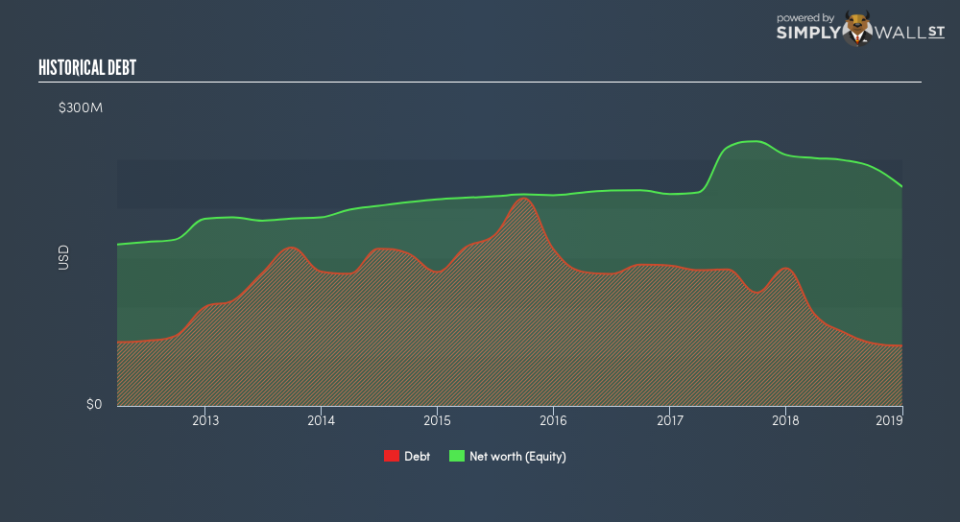Real Risks To Know Before Investing In MidSouth Bancorp, Inc. (NYSE:MSL)

Want to participate in a short research study? Help shape the future of investing tools and you could win a $250 gift card!
One of the biggest risk MidSouth Bancorp, Inc. (NYSE:MSL) faces as a bank is bad loans, also known as credit risk. As a small cap stock in the heavily regulated financial services sector, its stock has many factors to consider. As a small bank, MidSouth Bancorp’s profits are directly affected by macroeconomic events as the ability for borrowers to repay their debt depends on the stability of their salary and interest rate levels. Bad debt is directly written off as an expense which impacts MidSouth Bancorp’s bottom line and shareholders’ value. Today we will analyse MidSouth Bancorp’s level of bad debt and liabilities in order to understand the risk involved with investing in MidSouth Bancorp
Check out our latest analysis for MidSouth Bancorp
Does MidSouth Bancorp Understand Its Own Risks?
The ability for MidSouth Bancorp to forecast and provision for its bad loans accurately serves as an indication for the bank’s understanding of its own level of risk. If it writes off more than 100% of the bad debt it provisioned for, then it has poorly anticipated the factors that may have contributed to a higher bad loan level which begs the question – does MidSouth Bancorp understand its own risk?. With a bad loan to bad debt ratio of 59.36%, MidSouth Bancorp has under-provisioned by -40.64% which is below the sensible margin of error, illustrating room for improvement in the bank’s forecasting methodology.
How Much Risk Is Too Much?
If MidSouth Bancorp’s total loans are made up of more than 3% of bad debt, it may be engaging in risky lending practices above the judicious level. The bank’s profit is impacted by bad loans as these cannot be recovered by the bank and are expensed directly from its bottom line. Since bad loans make up 3.26% of its total assets, which is above the prudent level of 3%, it faces a high chance of default. Given that most banks tend to be well-below this threshold, MidSouth Bancorp faces a much higher risk level and shows below-averagebad debt management.
Is There Enough Safe Form Of Borrowing?


MidSouth Bancorp operates by lending out its various forms of borrowings. Customers’ deposits tend to carry the smallest risk given the relatively stable interest rate and amount available. As a rule, a bank is considered less risky if it holds a higher level of deposits. Since MidSouth Bancorp’s total deposit to total liabilities is very high at 95% which is well-above the prudent level of 50% for banks, MidSouth Bancorp may be too cautious with its level of deposits and has plenty of headroom to take on risker forms of liability.
Next Steps:
While MidSouth Bancorp has maintained a safe level of deposits against its liabilities, it has taken on excess levels of bad debt and poorly provisioned for these bad debt payments. This could lead to lower profits than may have been expected by the company. This possibility of an undesirable impact on cash flow lowers our conviction in MidSouth Bancorp as an investment. Today, we’ve only explored one aspect of MidSouth Bancorp. However, as a potential stock investment, there are many more fundamentals you need to consider. There are three important aspects you should look at:
Future Outlook: What are well-informed industry analysts predicting for MSL’s future growth? Take a look at our free research report of analyst consensus for MSL’s outlook.
Historical Performance: What has MSL’s returns been like over the past? Go into more detail in the past track record analysis and take a look at the free visual representations of our analysis for more clarity.
Other High-Performing Stocks: Are there other stocks that provide better prospects with proven track records? Explore our free list of these great stocks here.
To help readers see past the short term volatility of the financial market, we aim to bring you a long-term focused research analysis purely driven by fundamental data. Note that our analysis does not factor in the latest price-sensitive company announcements.
The author is an independent contributor and at the time of publication had no position in the stocks mentioned. For errors that warrant correction please contact the editor at editorial-team@simplywallst.com.

